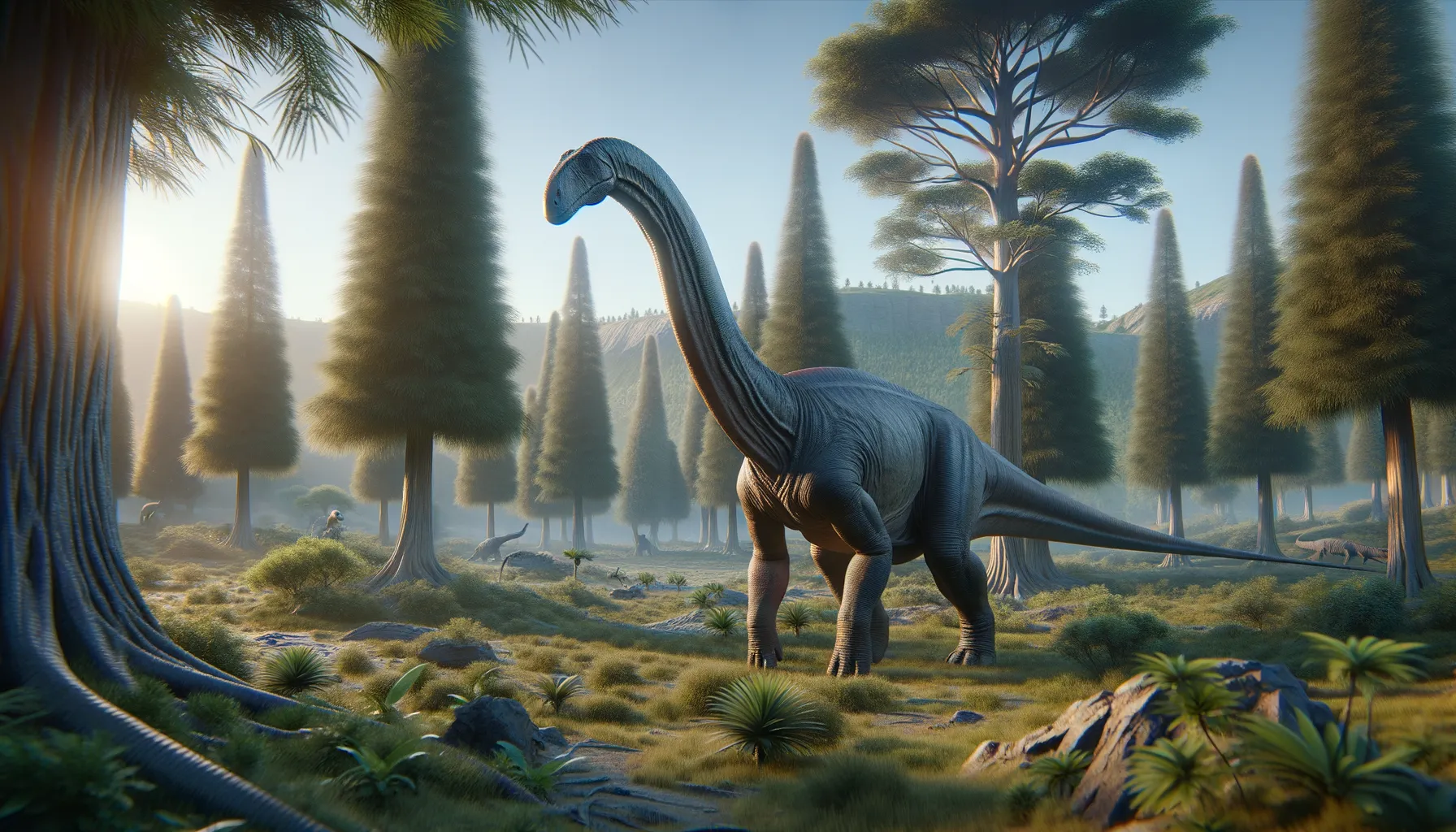
Ruehleia
Ancient Triassic herbivore of peaceful lands!
Period
Triassic
Length
Measured around 4.5 meters long.
Height
Stood approximately 2 meters tall.
Weight
Estimated to weigh around 500 kg.
Ruehleia was a basal sauropodomorph dinosaur that roamed the Earth during the Late Triassic period. It was a relatively large herbivore with a long neck and tail, and a bulky body supported by sturdy legs. Fossils have been found in Germany, providing insight into its anatomy and lifestyle. Ruehleia represents an important evolutionary stage between early saurischians and the more derived sauropods.
Diet
Ruehleia was a herbivore, primarily feeding on plants. Its diet likely consisted of ferns and other low-growing vegetation. Its teeth were adapted for cropping soft, leafy materials.
Hunting
Being a herbivore, Ruehleia did not hunt. Instead, it probably spent much of its time foraging for food. Its long neck allowed it to reach vegetation in a variety of niches.
Environmental challenges
During the Late Triassic, Ruehleia lived in a time of changing climates and environments. It faced challenges such as finding consistent food sources and avoiding predators. The period was marked by the break-up of the supercontinent Pangaea, which likely affected its habitat. Fluctuations in climate could have also influenced the availability of its plant-based diet.
Speed
Presumed to have been slow due to its size.
Lifespan
Lifespan likely ranged from 20 to 30 years.
First discovery
Discovered in Germany in the 1990s.
Fun Facts
- Ruehleia was a herbivorous dinosaur that lived around 210 million years ago during the late Triassic period.
- It was named in honor of Dr. Richard Ruehle, a German paleontologist, for his contributions to dinosaur studies.
- Ruehleia's fossils were discovered in Germany, reinforcing the presence of dinosaurs in Europe during the Triassic.
- This dinosaur was relatively small, with estimates suggesting it was about 4 meters (13 feet) long.
- Ruehleia is considered an early relative of the famous giant sauropods like Brachiosaurus and Diplodocus.
- The structure of its bones suggests that Ruehleia might have walked on two legs, at least part of the time.
- Despite its small size compared to later dinosaurs, Ruehleia's discovery helps scientists understand dinosaur evolution.
Growth and Development
Ruehleia likely experienced significant growth during its early years, reaching near-adult size swiftly. Juveniles probably relied on camouflage and group behavior for protection. As it matured, its size itself became a deterrent against predators. The growth patterns may have been similar to those of other sauropodomorphs, displaying rapid juvenile growth followed by a slower, extended adult stage.
Habitat
Ruehleia's habitat consisted mainly of forested environments with ample vegetation. These areas provided the necessary food sources and protection. The landscape was likely varied, offering a mix of open spaces and dense forest cover. Proximity to water sources would have been essential for its survival as a large herbivore.
Interaction with other species
Ruehleia likely interacted with other herbivorous dinosaurs as well as various smaller faunal species. It might have shared its habitat with early carnivorous dinosaurs, always on the alert for potential threats. Social behavior among Ruehleia individuals could have involved group foraging activities. Interaction with non-dinosaurian species would have included competition for space and resources.
Natural lifespan
Under natural conditions, it could live up to 30 years.
Reproduction
Ruehleia likely laid eggs, like most dinosaurs of its type. Nesting would have been done in secure locations, possibly in groups for shared defense. Parental care is uncertain, but egg-laying dinosaurs often left their eggs unattended. Hatchlings would have been precocial, meaning they were relatively mature and mobile soon after birth.
Social behaviour
Ruehleia may have exhibited social behaviors typical of herbivorous dinosaurs. It likely lived in groups for protection and social interaction. Group living could have been advantageous for locating food sources. Social structures might have included hierarchies based on size or age.
Fossil locations
Fossils of Ruehleia have been discovered in Germany, specifically in the region known as Franconia. These finds have provided valuable information on its morphology and ecological role. The German sites have been key in understanding Late Triassic ecosystems. No other locations have been reported for Ruehleia fossils outside Europe.
